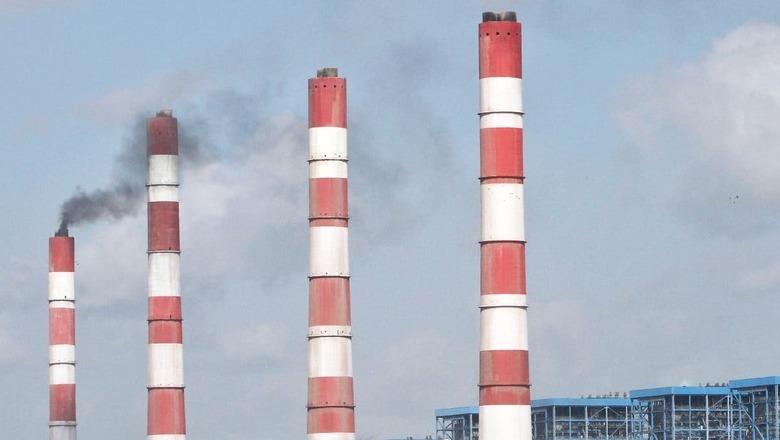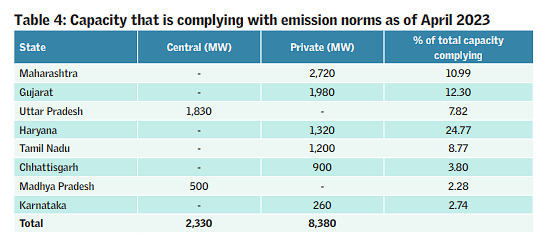
views
Seven years after emission norms were introduced, only 5 percent of the total coal-based power capacity has managed to comply with them, shows a new report. The comprehensive analysis, led by New Delhi-based Centre for Science and Environment (CSE), shows how India’s coal sector continues to drag its feet in meeting SO2 emission norms even as the world inches closer to 1.5 degrees warming.
According to the report, only 17 percent of the total thermal power capacity is still at the initial stages of compliance. The majority, which is complying with norms, is owned by private power generating companies and not government-run units, the report shows.
In December 2015, the ministry of environment, forest and climate change (MoEFCC) first notified emission norms for coal-based power plants with 2017 as an initial deadline. But a blanket extension of five years was given to all and has been revised twice since.

Norms diluted, deadlines extended
The norms have been diluted for several parameters and deadlines delayed, said CSE’s industrial pollution unit programme director Nivit Yadav. Researchers assessed the status of compliance on the basis of data reported by the Central Electricity Authority (CEA) till April 2023.
This includes details of units, which have installed air pollution control devices – flue gas desulphurisation (FGD) systems for controlling sulphur dioxide (SO2) emissions. The analysis shows that only 5 percent of thermal plants have installed FGDs, so far. Of this, 9,280 MW capacity have reported to have commissioned FGDs while another 1,430 MW only claim to be “SO2 compliant”.
“How far these claims are true is difficult to say, considering that there is no information available about on-ground inspections conducted by state-level regulatory bodies to confirm these claims,” said Anubha Aggarwal, programme officer in CSE’s industrial pollution unit.
The entire process of installation of FGD takes about two years, which is followed by temporary shutdown of the unit for making necessary arrangements.
State-wise comparisons
The report shows that among states, Maharashtra has the highest capacity complying with required emission norms (11 percent). This is followed by Gujarat, Uttar Pradesh, Haryana and Tamil Nadu. But region-wise, eastern states present the most dismal scenario.

None of the states – Bihar, West Bengal, Odisha, Assam, and Jharkhand – have any thermal power plants complying with emission norms. Apart from West Bengal, other states are still at an initial stage of compliance. The eastern region commissioned coal-based power plants of a total of 6,962 MW capacity after January 1, 2017, two years after the norms were introduced. Yet, the plants were built without a provision for FGD systems, the report said.
The report further shows that on the western side, Chhattisgarh, Gujarat, Madhya Pradesh and Maharashtra, compliance level stands at just 7 percent of the total capacity.
In the case of Delhi and the national capital region (NCR), there are 11 coal-based power plants within a 300-km radius of Delhi. Only two out of the 11 power plants – Dadri TPP and the Mahatma Gandhi TPP – had complied with the norms by the 2019 deadline. The state-run Panipat TPS (710 MW) is unlikely to meet the 2024 deadline as the plant is yet to award a work order for FGD commissioning, the report said.
Down south, not a single power plant in Andhra Pradesh, which has the highest coal power capacity in the region, and Telangana is complying with the norms to date. But there is a substantial increase in capacity that is likely to meet the norms, as per the analysis.
Why the delay?
Yadav said several factors such as dependency on the external market for FGD components and the Covid-19 pandemic have been blamed for delays in implementation. “It will not be surprising if we see another extension in the deadline soon; or worse, diluted norms for several plants,” he said, adding, “the exhaust from any industry, including power plants, is not restricted to the plant’s boundaries. Depending on wind direction and speed as well as other meteorological factors, it spreads far and wide and contributes to air pollution in the neighbouring vicinity.”
It should be noted that early this year, the central government issued an advisory to all power utilities not to decommission or retire any old coal-fired TPPs until 2030.




















Comments
0 comment